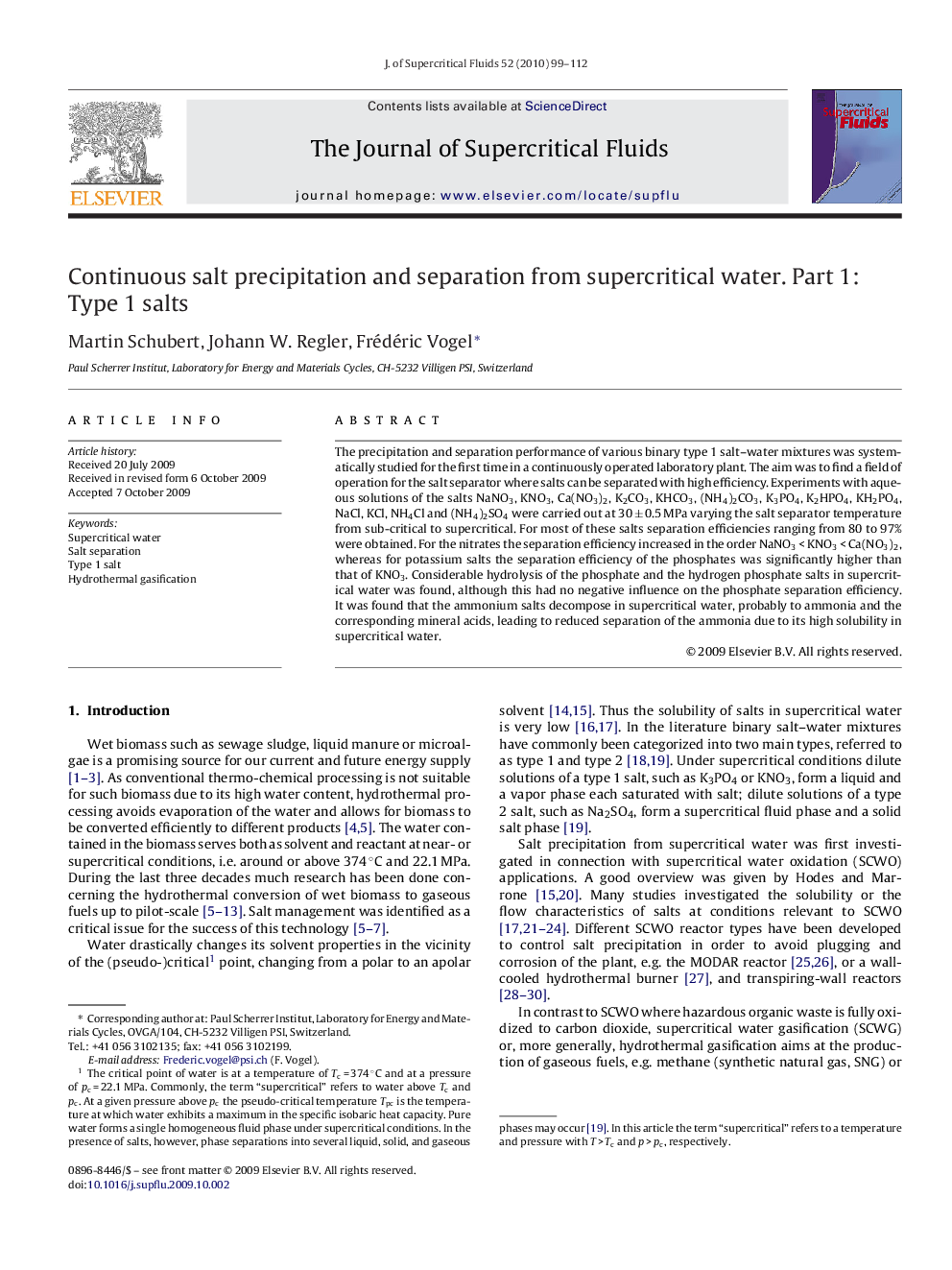| Article ID | Journal | Published Year | Pages | File Type |
|---|---|---|---|---|
| 231505 | The Journal of Supercritical Fluids | 2010 | 14 Pages |
The precipitation and separation performance of various binary type 1 salt–water mixtures was systematically studied for the first time in a continuously operated laboratory plant. The aim was to find a field of operation for the salt separator where salts can be separated with high efficiency. Experiments with aqueous solutions of the salts NaNO3, KNO3, Ca(NO3)2, K2CO3, KHCO3, (NH4)2CO3, K3PO4, K2HPO4, KH2PO4, NaCl, KCl, NH4Cl and (NH4)2SO4 were carried out at 30 ± 0.5 MPa varying the salt separator temperature from sub-critical to supercritical. For most of these salts separation efficiencies ranging from 80 to 97% were obtained. For the nitrates the separation efficiency increased in the order NaNO3 < KNO3 < Ca(NO3)2, whereas for potassium salts the separation efficiency of the phosphates was significantly higher than that of KNO3. Considerable hydrolysis of the phosphate and the hydrogen phosphate salts in supercritical water was found, although this had no negative influence on the phosphate separation efficiency. It was found that the ammonium salts decompose in supercritical water, probably to ammonia and the corresponding mineral acids, leading to reduced separation of the ammonia due to its high solubility in supercritical water.
Graphical abstractFigure optionsDownload full-size imageDownload as PowerPoint slide
